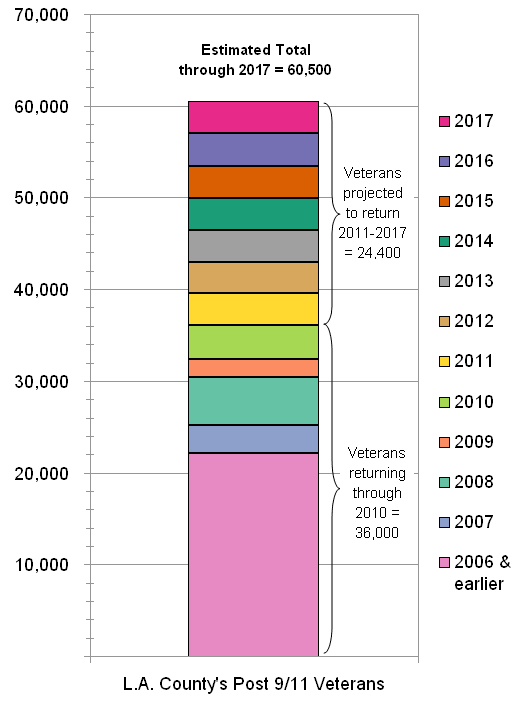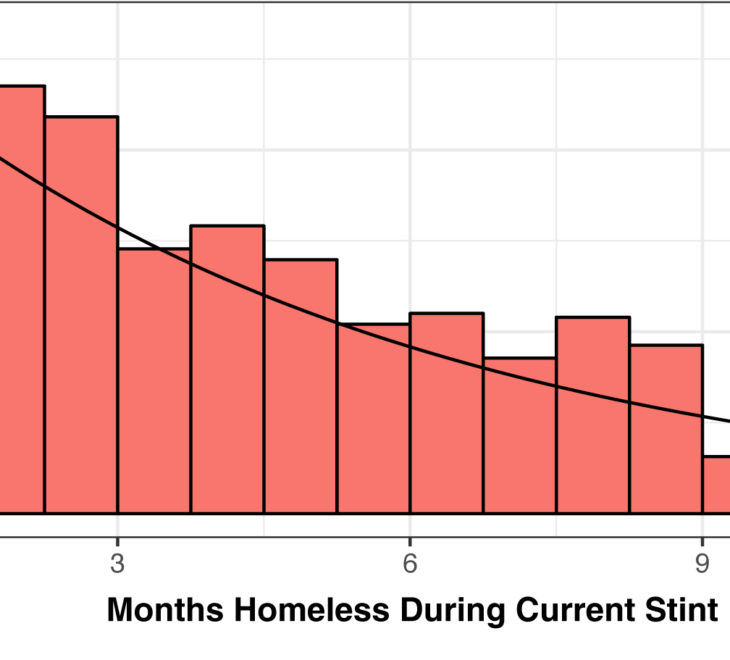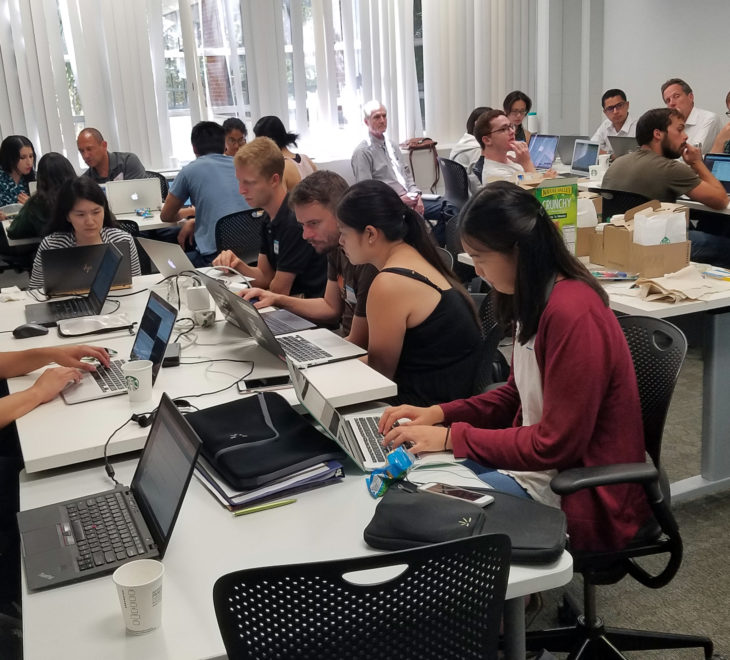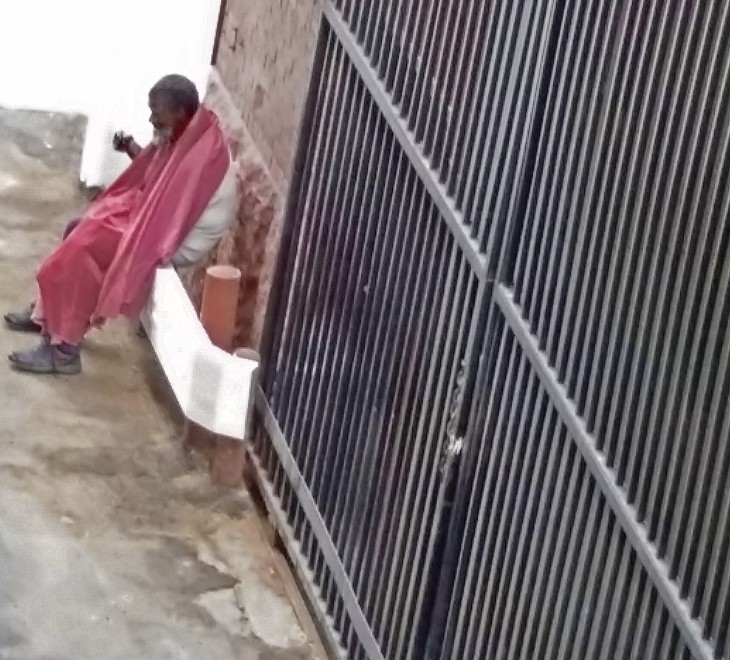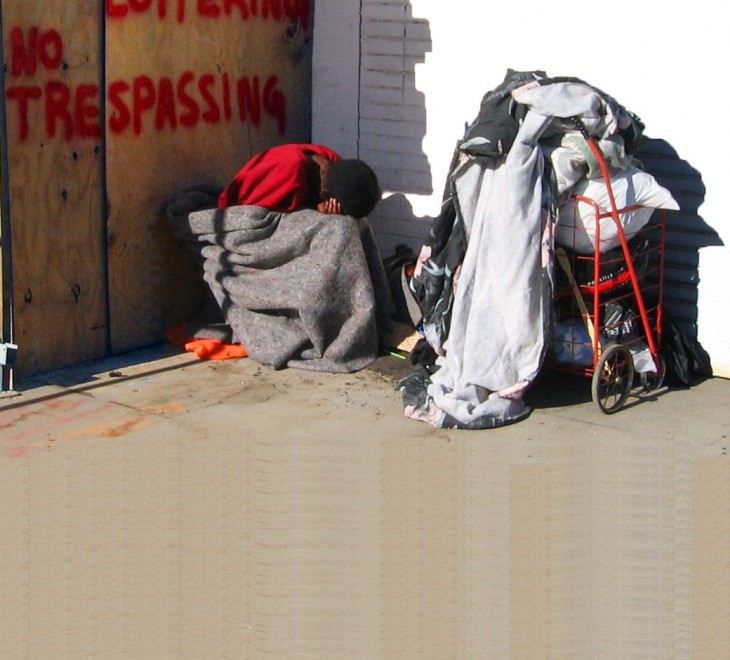Stepping Up for Veterans Standing Down
The nation is drawing down thousands of troops from the Iraq and Afghanistan wars, where they have served the country in difficult, complex and dangerous circumstances.
Finding pathways to sustaining employment during a prolonged recession is proving difficult for many post-9/2001 veterans. The skill, purpose and dedication that veterans demonstrated in serving this country at a minimum earns them the right to a fair shot at a job in the civilian labor force. The United Way of Greater Los Angeles commissioned this report to understand veterans’ employment rates ands other indicators of well being.
Numbers of Veterans:
- The county is home to approximately 328,000 military veterans as of 2010
- This is 17 percent of California’s 1,911,000 statewide veteran population
- An additional 24,400 veterans are projected to return from Iraq and Afghanistan between 2011 and 2017, joining the 36,000 post-9/11 veterans already residing in the county (see stacked bar chart at right).
Labor Force and Poverty Status:
- Just under half of veterans are in the labor force, with the remainder being older veterans having reached retirement age
- The unemployment rate for veterans rose to 12 percent in 2010
- For veterans of Iraq and Afghanistan, the unemployment rate is over 18 percent
- The under-employment rate for veterans, including discouraged workers, is 23.5 percent
- Veterans of Iraq and Afghanistan have the highest under-employment rate – over 35 percent in 2010
- Seven percent of veterans live below the poverty line; over 11 percent of Iraq and Afghanistan veterans live in poverty
Level of Education:
- Veterans are better educated than the non-veteran adults
- Over a quarter of Iraq and Afghanistan veterans are currently pursuing some form of further education, particularly as college undergraduates.
Disability Status and Health Insurance Coverage:
- Veterans have higher rates of disabilities than non-veterans, 25 percent versus 11 percent
- Forty-four percent of WWII and Korea veterans report living with a disability; most commonly experiencing physical difficulty and difficulty remembering
- Ninety-four percent of veterans have health insurance coverage, compared to 73 for non-veteran adults
- Sixteen percent of recently returned veterans report having no health insurance coverage
- Employer or union-provided health insurance covers over half of our veterans who served in Iraq, Afghanistan, Desert Storm, Bosnia and Lebanon
- Medicare is the greatest source of insurance for older veterans of WWII and Korea
Housing Conditions:
- Veterans have lower rates of rent burden and overcrowding than non-veterans; they stay longer in their housing and share it less frequently with non-relatives than non-veterans
- Veterans who served in Iraq and Afghanistan are the most likely to experience overcrowding, while older veterans of WWII and Korea pay the highest share of their incomes for rent
Demographic Profile:
- Veterans are significantly older than the rest of the population, with 45 percent aged 65 and over; although this difference should lessen over time
- Only six percent of veterans are female, although 13 percent of Iraq and Afghanistan veterans are women
- Overall, European Americans make up a majority of veterans, but recent veterans of Iraq and Afghanistan more closely resemble the diversity of the county, with Latinos making up the largest group
- Asian American and Pacific Islander veterans outnumber African American veterans among those serving in Iraq and Afghanistan, the first time this has been the case
- Veterans report being married more often than non-veterans, but also are divorced and separated more often.
Veterans returning from Iraq and Afghanistan face challenges in finding employment, rising out of poverty, coping with disabilities, obtaining education, and finding decent housing. While in military service, many veterans received world class training across diverse disciplines, often aligning veterans’ skills with the needs of fast growing industries. Leveraging the skills of military veterans will build a stronger workforce and a more competitive economy.
Acknowledgements
The Economic Roundtable wishes to acknowledge the valuable collaboration of Evelyn Garcia, Program Officer for Financial Stability at United Way of Greater Los Angeles. Her support for gathering and analyzing the most recent, geographically-disaggregated data about Los Angeles County’s veterans has helped built a solid foundation for improved public policy. Nancy Berglass provided valuable feedback and information for this study.
United Way Report
United Way of Greater Los Angeles Releases Report and Action Plan to Support 25,000 Returning Veterans. November 9, 2012.
Press Coverage
Zavis, Alexandra . 2012. Poverty growing among L.A. County veterans, study finds. Los Angeles Times, November 9, 2012.
Post 9/11 Veterans’ Returning Home; Thousands At Risk Of Poverty, Unemployment. Heraldonline.com (South Carolina), November 9, 2012.

